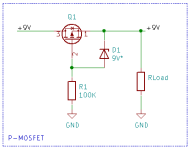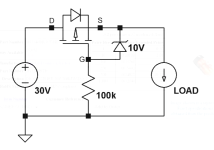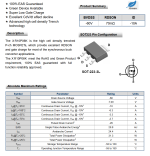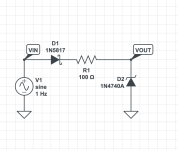Hey folks. Given I design for myself and don't really have to worry about scale, I want to design things the "right way.
I'm designing pedal and studio gear. I think for some stuff I will use a linear power supply that will provide +12/0/-12 using a 5 pin din connector, so not worried about the wrong thing being connected.
For pedals though I will probably use an LT1054 for when I want +/-. I think I will use components in all designs that could withstand 15v (so at least 30v, probably minimum 63v caps for instance).
So here's my question, I think I want to use the MOSFET protection like this example. What properties am I looking for in a MOSFET (SMD is fine). I know P-channel. But what other datasheet points should I keep in mind? I saw someone recommend this https://www.lcsc.com/product-detail/C75561.html
The VS voltage is 20v, is this too small for power supply spikes with a nominal voltage of 12v input? The Current - Continuous Drain(Id) is 2.8A. The RDS(on) is 74mOhms. I think I read that smaller is better (lower drop out voltage?).
Here's another candidate I thought might work https://www.lcsc.com/product-detail/C42457011.html
I'll be using the 1N4744A for over voltage protection which I think should protect the LT1054.

I'm designing pedal and studio gear. I think for some stuff I will use a linear power supply that will provide +12/0/-12 using a 5 pin din connector, so not worried about the wrong thing being connected.
For pedals though I will probably use an LT1054 for when I want +/-. I think I will use components in all designs that could withstand 15v (so at least 30v, probably minimum 63v caps for instance).
So here's my question, I think I want to use the MOSFET protection like this example. What properties am I looking for in a MOSFET (SMD is fine). I know P-channel. But what other datasheet points should I keep in mind? I saw someone recommend this https://www.lcsc.com/product-detail/C75561.html
The VS voltage is 20v, is this too small for power supply spikes with a nominal voltage of 12v input? The Current - Continuous Drain(Id) is 2.8A. The RDS(on) is 74mOhms. I think I read that smaller is better (lower drop out voltage?).
Here's another candidate I thought might work https://www.lcsc.com/product-detail/C42457011.html
I'll be using the 1N4744A for over voltage protection which I think should protect the LT1054.




